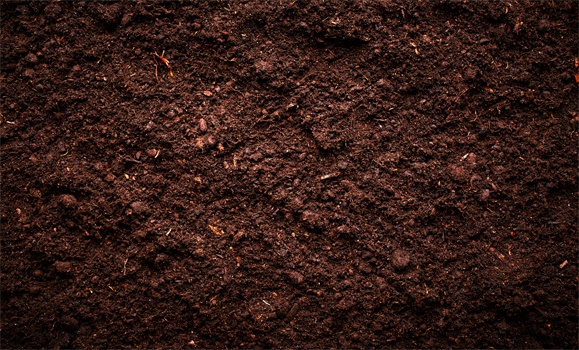Author is a Professor of Agronomy and Agroecology in the Faculty of Agriculture at Ģ��AV.
The English language is full of phrases — from “bogged down” to “feet of clay” and “dirt cheap” — that reflect how we appreciate the diversity of soil, but value it little.
Soil retains a special place in many cultures. In Ireland, where I grew up, patches of what is known as “hungry ground” are thought to retain the memory of the Irish Famine in the 1800s, and you are advised to carry bread while you cross them. To poet Patrick Kavanagh, the clay of soils sealed the hopeless fate of lonely Irish bachelor farmers: “.”
But is soil valueless like dirt or replete with mystery? Is it just dirt, or a cathedral of evolutionary and cultural memory? Like an elder among us, soil holds records of our planet’s past and the possibilities of its future sustainability.
A repository of memory
Like a library, soil houses stories written from the microscopic to the landscape scale of human and evolutionary history. Our enormous recent impacts, from to our use of atomic weapons, can be read as elemental and isotopic traces in soil.
One quarter of all the world’s biodiversity can be found in soil; it is where many . In many cases, plants and soil microbes established mutually beneficial relationships, communicating with each other by sending signals through the soil in a complex dating game. Butterflies and beetles and some bees, too, .
Soil also remembers its natural vegetation — as seeds that can be used to help restore the native plant diversity and ecosystem, . For plants, may even be transmitted to their offspring.
Ecosystem services
In our urgent search for solutions to climate change, we have realized soils are key to turning back the carbon clock and . Thus we are recognizing soils as far more than just an anchor for growing plants, but as the irreplaceable “skin of the Earth” providing economic, environmental and social services that are essential for life.
Read more:
Now more than ever, the science of soil reflects this appreciation of soil’s keystone role in preserving biodiversity, reversing climate change and sustaining life on Earth.
Understanding soil
The history of soil science has often been , including the recent production of and , both wonderful examples of important global advances in soil science.
Rapid advances in application of molecular techniques are helping us understand in much greater detail the relationships between soil organisms and the many essential functions they perform. Importantly, too, we are learning much more about soil’s resilience, such as how it responds to, and may recover from, .
We are learning more about the services provided by soils in cities, and . According to Canadian soil scientist Henry Janzen, a fundamental goal of soil science and key to global sustainability .
Managing farm soils
Intensive farming systems are a major driver of land degradation and soil losses, and . Applying our improved understanding of soil, an urgent challenge is to develop and support farming systems that are sustainable ecologically while also providing humanity sufficient supplies of food and fibre.
Farmers, as land managers, are on the front lines of this challenge. and consider themselves stewards or caretakers of plant diversity and the soil as much as solely producers of crops.
For example, farmers who plant mixtures of flowering cover crops (buckwheat, phacelia, sweet clover, vetch etc.) benefit pollinators. The crop also protects the soil by keeping it covered over winter. As it decomposes, the abundant cover crop residue improves the soil’s structure and biological activity, while releasing nutrients to the following cash crop.
We need to cherish and learn from soil now more than ever. It holds the keys to our planet’s past and future.![]()
which features includes relevant and informed articles written by researchers and academics in their areas of expertise and edited by experienced journalists.
Ģ��AV is a founding partner of The Conversation Canada, an online media outlet providing independent, high-quality explanatory journalism. Originally established in Australia in 2011, it has had more than 85 commissioning editors and 30,000-plus academics register as contributors. A full list of articles written by Ģ��AV academics can be found on .

